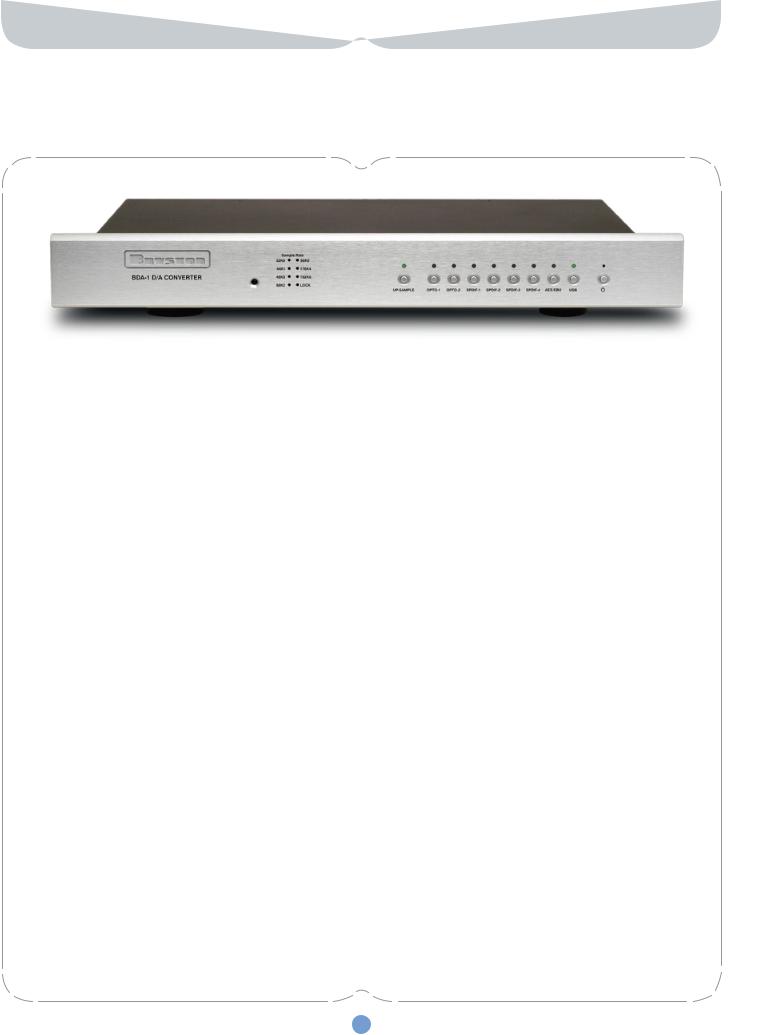Bryston BDA-1 User Manual

BRYSTON BDA-I
BDA–I EXTERNAL DAC
THE EVOLUTION CONTINUES

Introducing THE BDA-1 EXTERNAL DAC
STATE-OF-THE-ART
The Bryston BDA-1 is a state-of-the-art external Stereo DAC (digital to analog converter) using fully discrete Class-A proprietary Bryston analog circuits, two independent linear power supplies and dual Crystal CS-4398 DAC chips. The BDA-1 features an impressive array of inputs for USB, COAX, OPTICAL, AES-EBU and BNC equipped digital devices. For audio outputs, the BDA-1 offers both balanced XLR as well as unbalanced RCA stereo connectors on the rear panel. The BDA-1 is RS-232 software upgradeable, making it the most flexible high performance DAC on the market.
BDA-1 FEATURES:
•Dual 192K/24Bit Crystal DAC’s
•Independent dual power supplies
•Discrete Class A analog output stage
•Oversampling
•Synchronous upsampling (176.4K/192K)
•Selectable upsampling feature
•Independent analog and digital signal paths
•Inputs: USB (1), COAX (2), OPTICAL (2), AES-EBU (1) BNC (2)
•32, 44.1, 48, 88.2, 96, 176, 192K sampling
•16-24Bit PCM, 16Bit 32K-48K USB
•Fully differential balanced XLR and unbalanced RCA stereo outputs
BRYSTON BDA-1 EXTERNAL DAC
•Transformer-coupled SPDIF and AES EBU digital inputs
•SPDIF COAX bypass loop output
•RS-232 software upgrade
•Optional remote control
•Remote 12-volt trigger
•Compatible with CD drives, sound cards, computers, music servers
•Cosmetically matches Bryston C-Series BP26/ MPS2/BCD-1
JITTER REDUCTION
Jitter is a mistiming of data being moved from point A to point B in any synchronous digital system. Think of jitter as individual ticks on a clock—however each tick is not occurring at exact one-second intervals. Some are slightly less than a second and some are slightly longer, and they average out so that no actual time is being gained or lost over a large number of seconds. Jitter is the difference between the shortest and the longest second, and in digital audio systems this specification is usually measured in nanoseconds.
Both the frequency and the jitter characteristics of the system’s digital clock will affect the accuracy of reproduction. The frequency, if not accurate, can cause the pitch and speed of the music to change, and in some systems cause drop-outs if there is no data available.
2
